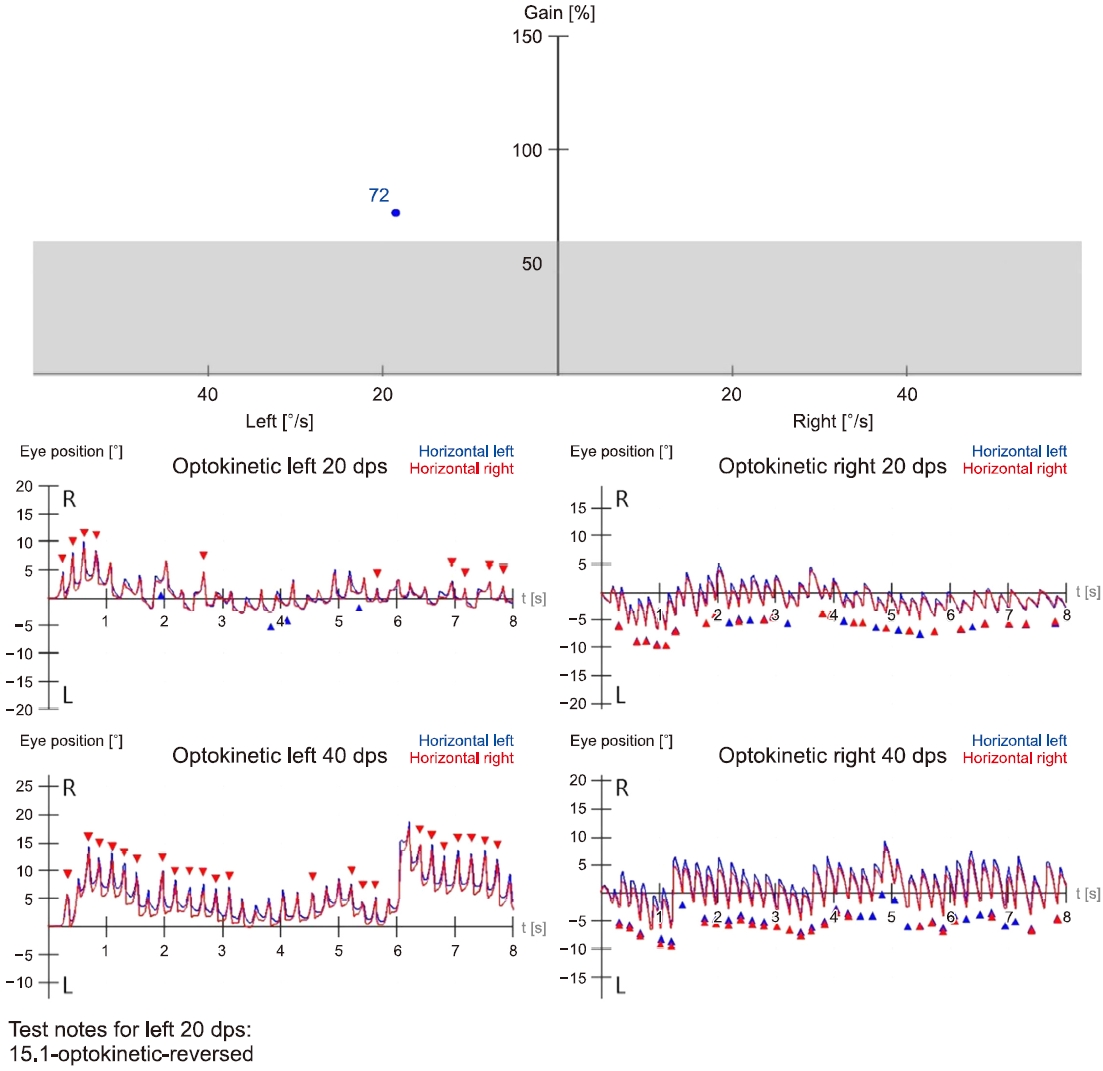역행성 시운동성 안진을 보이는 선천성 안진 1예
A Case of Congenital Nystagmus Showing Reversed Optokinetic Nystagmus
Article information
A 26-year-old man presented with abnormal eye movement detected during childhood. On examinations, left-beating spontaneous nystagmus and horizontal gaze-evoked nystagmus during visual fixation (Supplementary Video 1). Video-oculography revealed normal saccades and impaired smooth pursuit in the left direction. Notably, the optokinetic nystagmus was reversed (Fig. 1). Moreover, there were no significant findings in the caloric test, video head impulse test, vestibular evoked myogenic potentials and posturography assessments. Ophthalmologic examinations and brain magnetic imaging revealed unremarkable findings.

Reversed optokinetic nystagmus. Optokinetic nystagmus showed reversed optokinetic nystagmus in the form of an exponential graph pattern in which the accelerating slow phase form in the right direction was observed when the target moved to the left.
Previous studies have shown that in patients with congenital ocular disease, reversed optokinetic nystagmus may appear to be either bilaterally or unilaterally [1]. The reversed optokinetic nystagmus can be explained in terms of shifts in the position of the null point which is orbital eye position at which eye velocity is zero of the nystagmus induced by the pursuit or optokinetic stimuli [2]. Reversed optokinetic nystagmus is primarily observed in individuals with congenital nystagmus but can also occur in cases of acquired neurological abnormalities in the central nervous system, cerebellum, or brainstem. The precise cause of congenital nystagmus has not been definitively identified, but it is understood to result from abnormal decussation during the neural pathway’s formation [3].
Notes
CONFLICT OF INTEREST
Seong Hoon Bae is the Assistant Editor of Research in Vestibular Science. He was not involved in the review process of this article. All authors have no other conflicts of interest to declare.
FUNDING/SUPPORT
None.
AUTHOR CONTRIBUTIONS
Conceptualization, Methodology: SHB; Data curation: HCL, SY; Formal analysis, Visualization: HCL; Funding acquisition, Supervision: SHK; Project administration: SY; Writing–original draft: HCL; Writing–review & editing: SHB.
All authors read and approved the final manuscript.
SUPPLEMENTARY MATERIALS
Supplementary Video 1 can be found via https://doi.org/10.21790/rvs.2023.22.3.95. Videooculography revealed left spontaneous nystagmus with gaze-evoked nystagmus. Verbal consent was obtained for publication of this report with accompanying clinical image and video.
